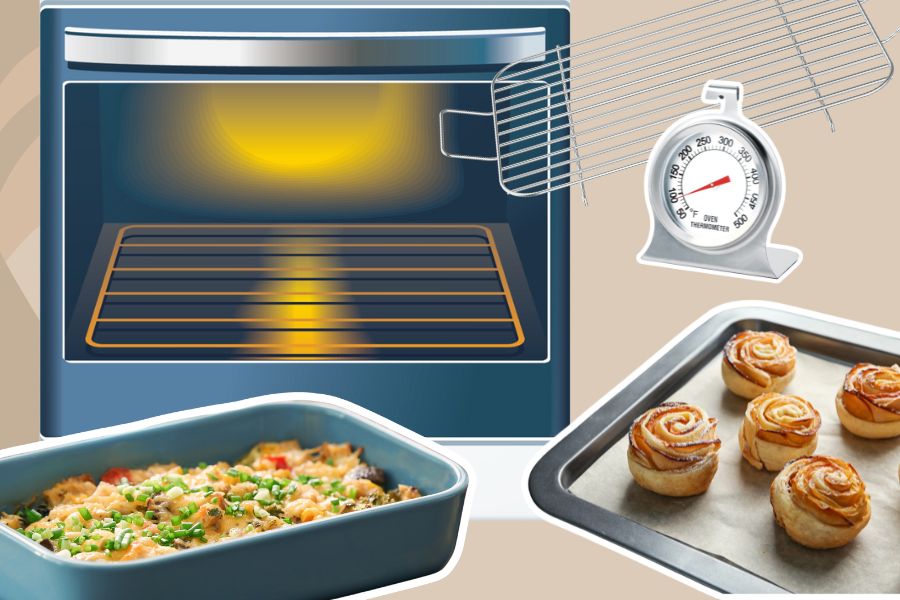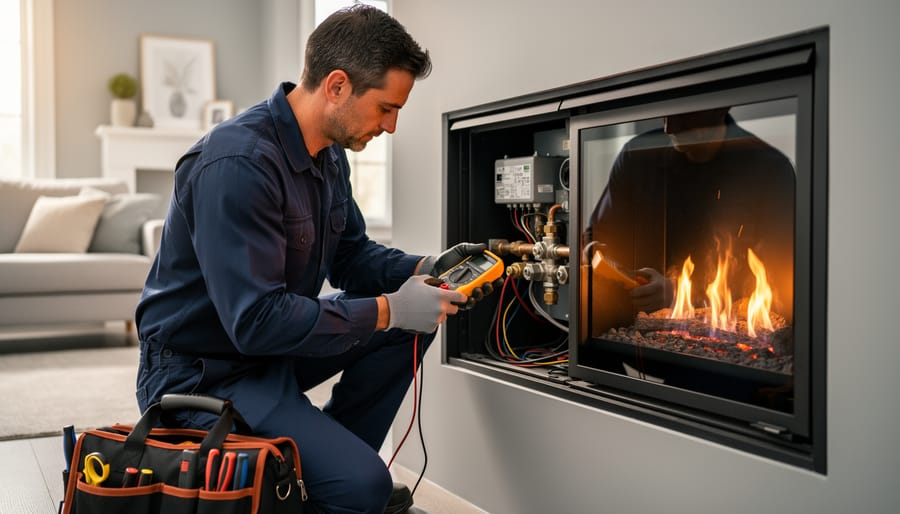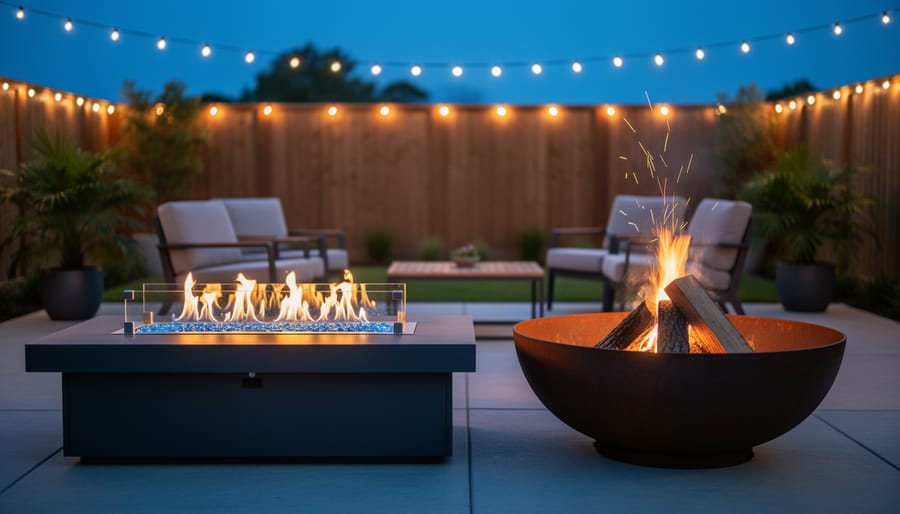In every home kitchen, the gas oven stands as a cornerstone, relied upon to turn raw ingredients into nourishing meals and delightful treats. Yet, many encounter problems baking with gas ovens, a hurdle that seems almost integral to becoming a seasoned home chef. Indeed, the challenges are manageable, and understanding the unique attributes of gas ovens can unlock a world of culinary potential.
I have spent countless hours tinkering with oven temperatures, adjusting baking times, and experimenting with various baking methods to grasp the full potential of gas oven baking. The intricate dance of heat and timing can be mastered, turning common issues into a thing of the past.
Allow me to guide you through the finer points of harmonizing with your gas oven, sharing insights and solutions to common problems that crop up while baking with gas ovens. From ensuring the correct temperature to even baking, we will explore ways to refine your baking experience.
Baking with The Gas Oven
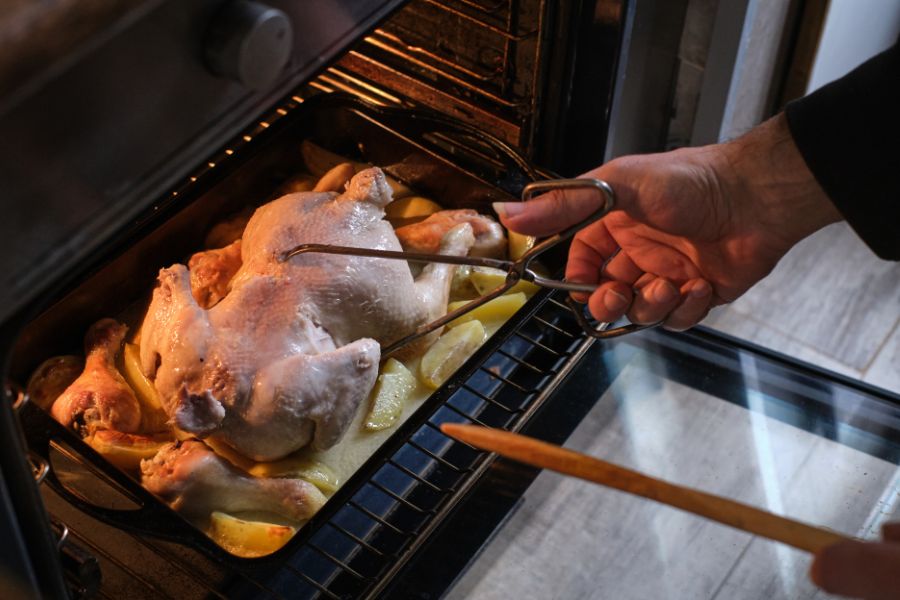
Unsurprisingly, most people would prefer baking in a gas-powered oven. They are cheaper to maintain and operate faster than electric ovens and usually provide more moisture.
Every gas oven has the main burner at the lower part, typically covered by an aluminum sheet with large vents on the sides. The main burner produces powerful radiant heat that radiates upwards into the oven’s main compartment.
Specific models also feature an additional burner on the oven’s roof. However, this is employed for broiling rather than to warm the oven to bake.
Gas is highly efficient, so they rapidly heat up. However, the oven temperature may fluctuate more frequently, and the overall heat is usually less uniform. Most gas ovens (especially older models) are equipped with hot spots.
Gas ovens can also become moister than convection or electric ovens because the combustion process releases some moisture into the oven’s air; this can cause problems with the browning process and crisping of some baked products.
These are typical traits of gas-powered ovens. Your oven may not exhibit all these features, particularly when it’s a more recent model. However, that doesn’t mean they are flawless. Some issues can arise when baking using a gas oven. Here in this article, we will discuss a few of them and their solutions.
Also Check: What is 2 1/2 Minutes On A Microwave?
7 Problems with Baking in Gas Ovens
Here are seven significant problems you could face when baking using a natural gas oven:

Problem #1: No Heat
Experiencing no heat while baking in a gas oven typically signals an igniter issue. Ensure it’s not a more severe gas line issue by checking the gas stovetop burners for ignition. If the gas is not igniting in the oven, consider replacing the igniter — a task you can undertake following the appliance’s manual.
Problem #2: Incorrect Heating Temperature
If your dishes are undercooked, it might be because your oven isn’t reaching the correct temperature. Possible culprits could be a malfunctioning temperature sensor or its incorrect placement. To resolve this, ensure the sensor is not touching the oven walls.
If the problem persists, recalibrating your oven might be necessary, using an oven thermometer to gauge the accurate temperature.
Problem #3: Uneven Cooking
Unevenly cooked dishes could be due to faulty heating elements or temperature sensors. Inspect these components and replace them if necessary.
Also, understanding your oven’s unique heat distribution and adjusting, such as changing rack positions or rotating the dish during cooking, can facilitate even more baking.
Problem #4: Lack of Crispy Tops
Gas ovens struggle to provide that crisp, golden top found in baked goods from electric ovens. A simple trick is to broil your dishes for a few minutes post-baking to achieve that perfect crunch.
Problem #5: Burned Bottoms
Gas ovens can cause the bottom of your baked items to burn due to heat radiating from the base. To prevent this, use the middle rack for baking or opt for light-colored baking racks that don’t absorb too much heat.
Problem #6: Overheating
Overheating can stem from thermostat issues. Ensure nothing obstructs the thermostat and maintain sufficient space around it for accurate temperature readings to prevent overheating.
Problem #7: Slow Cooking
Temperature fluctuations in your gas oven can result in slow and uneven cooking. Investing in an oven thermometer can help you monitor the true temperature. Enhancing the preheating time and slightly increasing the set temperature by about 25 degrees could also offer a solution.
17 Tips to Bake with Gas Ovens
Whether you are a seasoned baker or just starting, using a gas oven presents unique challenges. Here, we offer 17 tips to help you overcome those challenges and always bake to perfection. Let’s delve into the specifics of each tip to help you optimize your baking experience.
Preheat Your Oven for a Minimum of 15 Minutes
Understanding the importance of preheating your gas oven is vital. A good 15 minutes of preheating ensures a stable temperature, creating the perfect environment for baking goods, especially cakes.
Stay Vigilant with Your Food
Gas ovens can have fluctuating temperatures. Consequently, keeping a close eye on your food and making necessary adjustments to prevent baking mishaps is essential.
Employ an Oven Thermometer
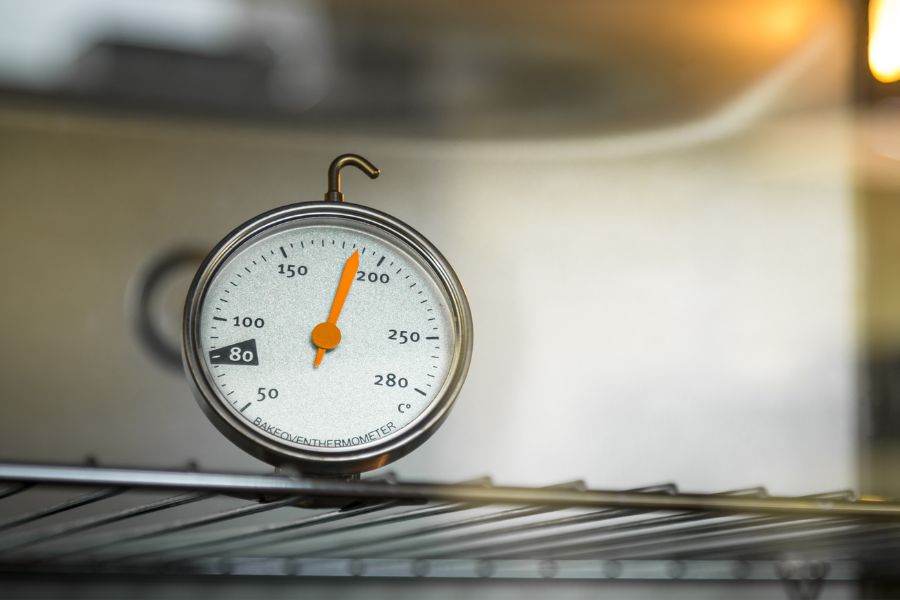
Equip yourself with an oven thermometer to maintain a stable baking temperature, ensuring your dishes are cooked evenly and perfectly.
Consistently Rotate Your Baking Sheets
Given the uneven heating nature of gas ovens, rotating your baking sheets halfway through the cooking process promotes even cooking, saving your dish from being overcooked in some areas and undercooked in others.
Enhance Crispiness Towards the End of Cooking
Aim for that perfect golden crust by broiling your food for a few minutes towards the end. Enhancing the cooking environment, for instance, by moving the tray to the highest point, can significantly contribute to achieving the desired crispiness.
Avoid Large Baking Trays
Utilize appropriately sized baking trays to ensure even heat circulation and prevent uneven cooking from blocking heat paths.
Opt for the Middle Rack for Balanced Heating
The middle rack offers the most consistent heating in a gas oven. Make it your default position unless your recipe advises otherwise to get the best results.
Shun Dark-Colored Pans
Lighter-colored pans absorb less heat compared to their darker counterparts. Opting for light-colored metal, glass, or silicone can prevent the undesired burning of your dishes.
Utilize Pizza Stones for Even Heat Distribution
Consider using a pizza stone, which not only aids in making great pizzas but also ensures even heat distribution for other dishes, improving your gas oven’s reliability.
Adhere Strictly to Recipe Instructions
Monitor the oven temperature and adjust it according to the recipe to attain the desired results.
Ensure an Unobstructed Thermostat
Avoid blocking the thermostat to facilitate precise temperature control, enhancing your baking outcomes.
Rotate Your Tray Diligently
Given the hot spots in gas ovens, rotating your trays ensures uniform baking, a step that is indispensable for perfect results.
Elevate Heat for Crispier Outcomes
If crispy is what you aim for, don’t hesitate to increase the oven temperature slightly to overcome the humid environment of a gas oven.
Chill Cookie Dough Before Baking
To prevent your cookies from flattening out, chill the dough before baking. This small step can ensure better-shaped and tastier cookies.
Upgrade to New Cookie Sheets
Investing in new aluminum baking sheets can be a game-changer in preventing cookies from burning and promoting even cooking.
Experiment with Silicone Bundt Pans
For bakers fond of bundt cakes, silicone pans can be your ally in achieving the perfect brown shade without any burns.
Extend Baking Time for Optimal Results
Acclimatize to the slower baking pace of gas ovens by allowing your dishes a few extra minutes in the oven, ensuring perfectly cooked outcomes each time.
By following these tips, you will be well on the path to mastering baking with a gas oven. Remember, the key to perfect baking is understanding your oven’s unique characteristics and adjusting your techniques accordingly. Happy baking!
What Are the Pros and Cons of Gas Ovens Compared to Electric Ones?
Navigating the pros and cons of gas and electric ovens can be challenging, especially when aiming for the best baking results. Let’s delve into the strengths and weaknesses to aid in your choice.
Gas ovens stand out in terms of efficiency, offering quicker heating and reduced utility bills due to the operation of the primary burner at the oven’s base, which facilitates heat radiation into the main chamber. This starkly contrasts electric ovens, which rely on heated coils to manage the temperature. This operational style of gas ovens potentially saves a notable amount of time and money with each baking session.
However, the heat control in gas ovens tends to be less precise than their electric counterparts, leading to a broader temperature fluctuation range and uneven heating. One could argue that this issue is mitigated by integrating convection fans in modern gas ovens, ensuring more uniform cooking.
Yet, for those seeking control over baking temperatures, opting for a dual-fuel range, merging the benefits of gas burners and electric ovens, is a superior choice. This harmonized approach brings forth a balance, allowing you to enjoy the best of both worlds while baking in a gas oven or electric one, assuring more consistent outcomes with your baked goods.
Conclusion: Baking with the Gas Oven
Baking using a gas oven can be a challenge. If you follow the given tips, it will help you stay clear of the most common issues. Here’s hoping that your baking adventures will be more enjoyable from now on!
Happy Baking!
FAQs
Why Is My Gas Oven Not Baking?
Your gas oven may not be baking correctly for several reasons, such as an extinguished pilot light, an incorrectly set thermostat, an improperly closed oven door, dirt and grease build-up, or old and damaged. If you have addressed these issues and still encounter problems, consider replacing your oven. Additionally, ensure to preheat your oven for at least 20 minutes to achieve an even temperature, and regularly check on your food to prevent overbaking, as gas ovens can sometimes bake foods quicker than electric ovens.
How Long Does It Take to Bake a Cake in A Gas Oven?
The time it takes to bake a cake in a gas oven can vary, generally taking 30-35 minutes for a 9×13-inch cake at a preheated temperature of 350 degrees Fahrenheit. For the best results, use a baking sheet or dish to evenly distribute heat and place it on the center rack in the oven.
It is crucial to monitor the cake regularly during baking and perform the toothpick test to ensure it is fully baked. If you need more time, it is better to start checking early to avoid overbaking.
What Is the Ideal Temperature for Baking a Cake in A Gas Oven?
The ideal temperature to bake a cake in a gas oven is 350 degrees Fahrenheit to facilitate even cooking without burning the cake. Note that for higher altitudes, a reduction in temperature by 25-50 degrees Fahrenheit might be necessary to accommodate the less dense air, which can cause cakes to bake faster.
Regularly check your cake while baking and perform the toothpick test to avoid overbaking and achieve the perfect bake.
Also read: 11 Most Common Gas Stove Problems

